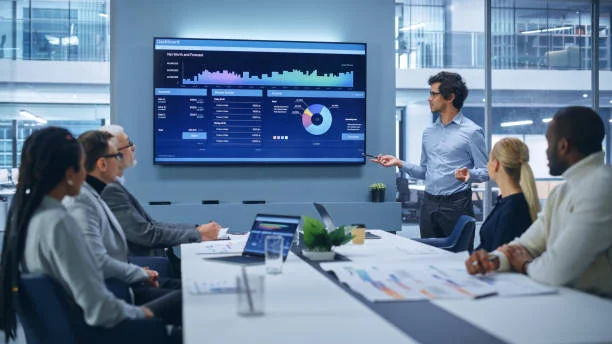When data is an inevitable part of your business, the ability to interpret it in accessible formats becomes more important. This needs something other than the art of data visualization, which, in simple words, turns out complex data in graphical or insightful understanding.
Data visualization benefits businesses, including making well-informed decisions, analyzing patterns, and more. Alongside, trends in data visualization have emerged with the next-level adoption and demand for big data. Technologies such as Artificial Intelligence and Augmented Reality generate high volumes of data at a pace that needs better data visualization tools.
Further, data visualization tools can help businesses take one step ahead of their competitors.
Anyway, in this article, we’ll highlight the trends in data visualization that will reshape the data visualization landscape over the years to come.
A Look at the Trends in Data Visualization
-
Real-Time Data Visualization
Real-time insights help to deliver prompt results. In 2,024 and beyond, accurate real-time visualization is turning into a game-changer. Traditional approaches are now a thing of the past, as they have now been replaced with dynamic dashboards offering in-depth information. With this, businesses can track key metrics of customer behavior more effortlessly. Real-time data visualization helps people make well-informed decisions in real time and gain a competitive edge.
2. Augmented Reality and Virtual Reality Integration
One of the buzzing data visualization trends is integrating augmented reality (AR) and virtual reality (VR). This is a strategic approach to create an immersive data experience. For an easy example, imagine walking through the surface of your data sets, visualizing complex relationships in data, and gaining insights in (3D) three-dimensional space. AR and VR are on the edge of revolutionizing how we understand and interact with data.
3. Spatial Data Visualization
There is no longer widespread utilization of two-dimensional graphs. In the dynamic world of technology and innovation, spatial data visualization is the new frontier. Whether you’re looking to map geographic data or visualize datasets, spatial data visualization has you covered. This trend lets you unleash spatial representation for thorough data exploration.
4. Mobile-First Visualization
With the standout growth in the number of smartphones, the field of data visualization is no exception. Data visualizations are designed with a mobile-friendly approach in mind. This trend mainly focuses on effective data analysis for mobile audiences.
5. Data Storytelling is Important
While technological advances occur, one aspect remains crucial: storytelling. It is necessary to curate amazing narratives from the data. Data storytelling is not restricted to presenting numbers but provides a captivating narrative that captures the audience. It contextualizes data and provides actionable insights that make it easy to relate to and grasp.
6. The Power of Data Democratization
Data is an asset for any company. In the past years, data was used primarily for decision-making only by scientists or professionals. However, the scenario has completely changed. For the greater good, data de-democratization came into light, allowing companies the right to break free. Previously, many organizations needed more bandwidth as they relied heavily on data scientists. Employees with technical expertise can work on and use data effectively.
They can also analyze massive data sets with no-code data analysis tools without specialized skills.
Concluding the Blog
Data visualization has become a pivotal tool for companies looking to present data simply and attractively, seizing the audience’s attention. Businesses, data analysts, and marketers should stay updated with the latest trends, technologies, and top-class data visualization tools, Which will help them stay competitive, build their brand, and meet their objectives.


